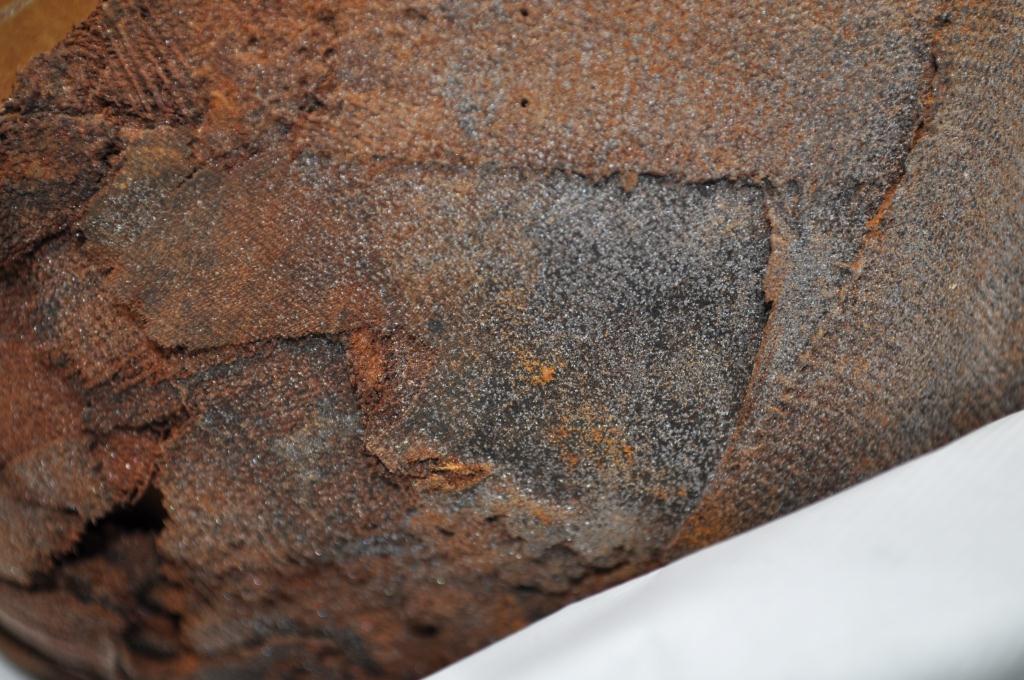Since the Artifact Lab opened on September 30, we (meaning my fellow Penn Museum conservators and myself) have spoken to hundreds of people who have visited the exhibit during our open hours (Tues-Fri @ 11:15am and 2:00pm, Sat-Sun @ 1:00pm and 3:30pm). Being the full-time conservator in the Artifact Lab, I get to talk to lots of our visitors, and I have to say that it has been one of the most fun parts of my job.

Chatting with visitors during a Q&A time in the Artifact Lab
I particularly love it when people ask me questions. Many of these questions are about Egypt-and because I am not an Egyptologist, I have spent a bit of time looking things up, asking our curators, and often saying “I don’t know, but I’ll see what I can find out.” We try to post answers to some of the frequently asked questions here on our blog, and we encourage you to ask questions via this blog well, by leaving them at the end of any of our posts, or in the comments box at the end of the FAQs page.
But many questions are about conservation, and this is an area that I can talk a LOT more about. One conservation-related question that I have heard a lot lately is “what are you going to use to repair that object, and will you use the same materials as the original?”. This is a great question, and gives me the opportunity to talk a bit about conservation decision-making and ethics.
There is a lot to consider when making decisions about how to repair objects and what materials to use. No two objects are exactly alike, so what works for one object may not work for another that is very similar.
One of the first things to consider is the nature of the object-what is it made out of and what is its condition (and why does it need conservation treatment)? We are always looking to choose treatment materials that are compatible with the original materials of the object and that will provide the strength, cohesion, etc. that the object needs.
That being said, we also use materials and methods for treatment that make our work easily distinguishable from the original object. For example, many conservation treatments involve filling losses in objects with new materials and coloring the fills to blend with the surrounding original materials. When carrying out this work, many conservators use an approach known as the rule of “6 Feet, 6 Inches”-meaning that when an object is viewed at 6 feet the repair is not visible but at 6 inches it is easy to distinguish from the original. We also document all of our treatments thoroughly in written reports and photographs, so that in the future it will be clear what has been done.
Another factor when choosing treatment materials is their long-term aging properties-we don’t want to use anything that discolors or becomes brittle over time (such as Duco cement) or will be very difficult, if not impossible, to remove later (like Elmer’s glue!!).
There is a LOT more to say on this topic, and as we put up new posts about ongoing projects we we will try to include information about the decision-making process. In the meantime-Ask the Conservator! Let us know if you have a question-either come visit us during our open window times or leave us a question here!






